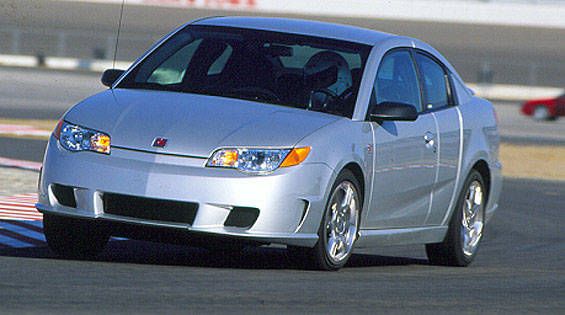mmcartalk
Expert
- Messages
- 4,159
- Reactions
- 2,675
MM Retro-Write Up: Saturn Ion
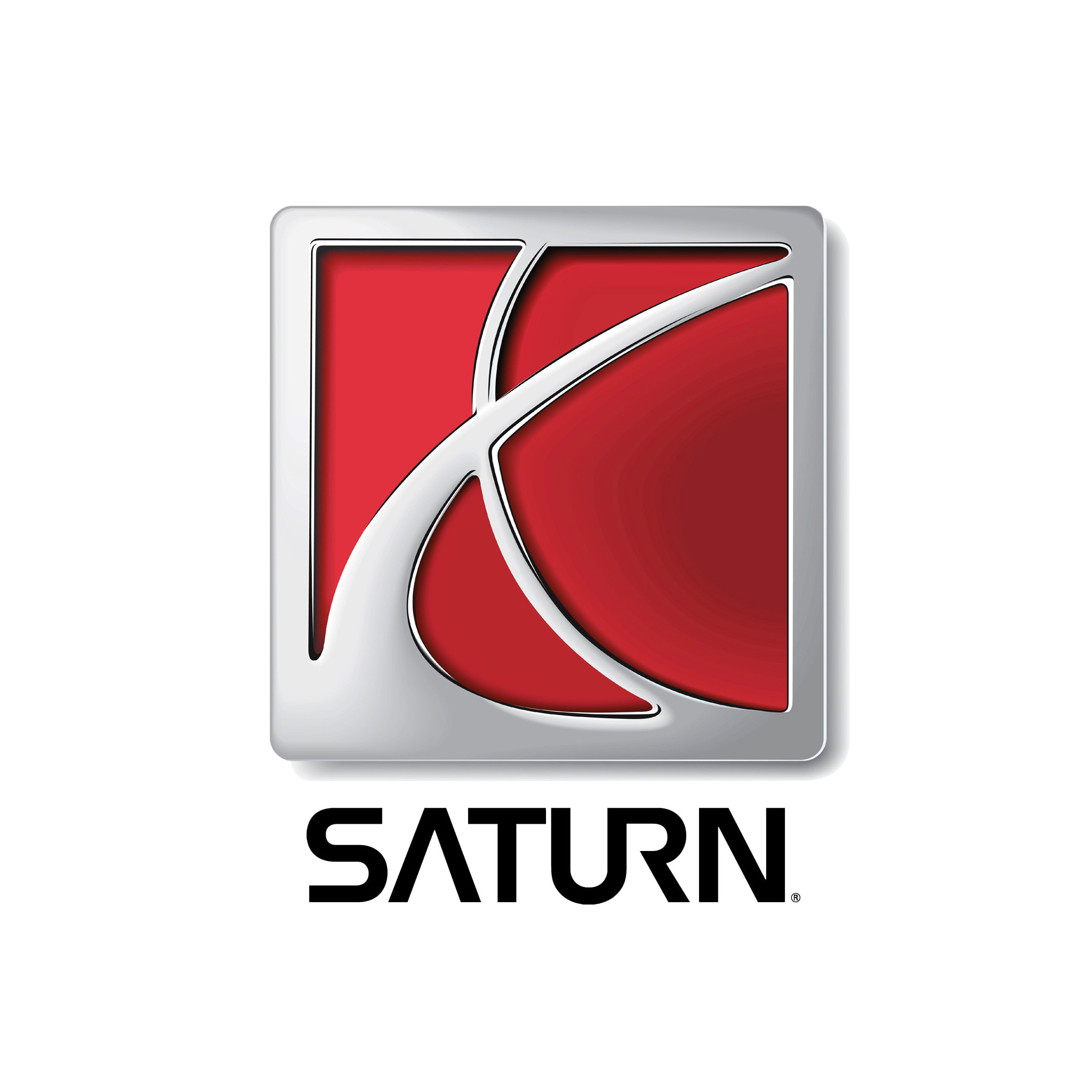
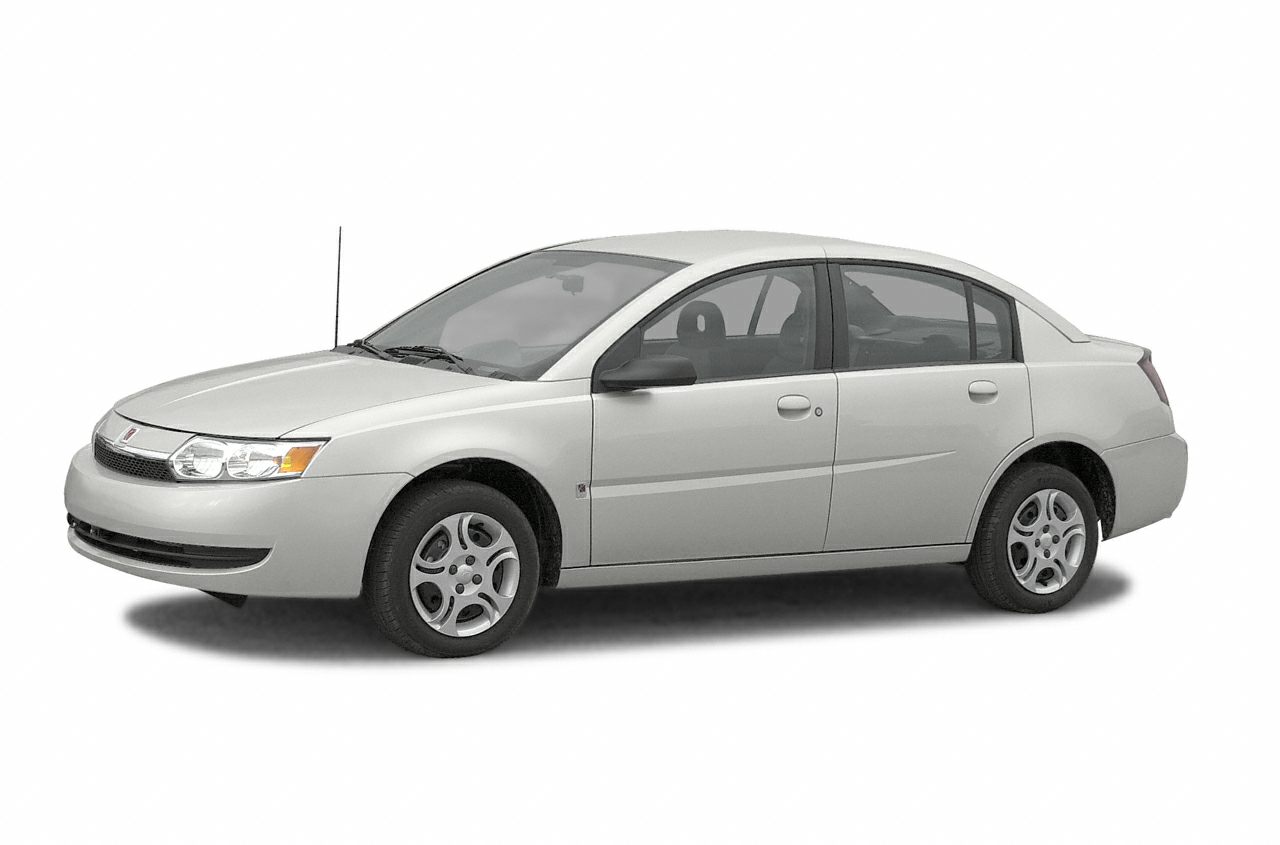

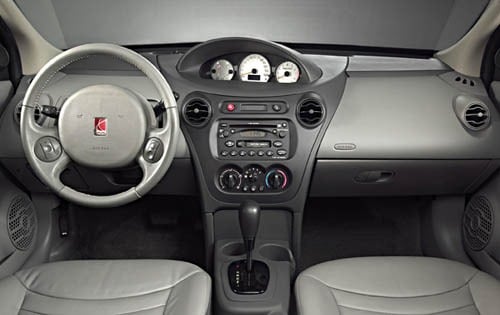

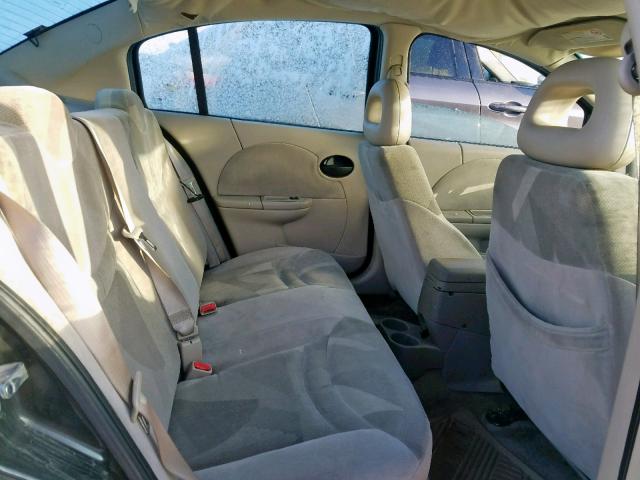
IN A NUTSHELL: One of Saturn's biggest disappointments.
There are a lot of things one can criticize ex-GM CEO Roger Smith for (and I have certainly done my share of it)...but, IMO, one of the best things (and one of the few good things) he did as CEO was to pave the way and give a green light to the creation of the all-new Saturn Division, which began selling vehicles in 1990. In fact, Saturn, technically, was not even a division per se, as, in its first decade, it shared virtually nothing with GM's other divisions, producing its own unique engines, transmissions, Space-frames/Thermoplastic bodies, and interiors. Indeed, its official designation was Saturn Corporation, not Saturn Division, and it was classed as a subsidiary of GM.
Saturn was not your run-of-the-mill auto company......nor, by any stretch of the imagination, was it intended to be. GM intended it, from the very start to be specifically an import-fighter, as the Japanese manufacturers, particularly with small and mid-size cars, had vastly increased their share of the U.S. market during that decade. Saturn was to be not only an import-fighter, but a totally different kind of auto company...which it certainly was. Saturn franchises were to be Saturn-only.......forbidden to share their facilities with any other division or manufacturer. The staff were not to wear the usual business-suits...everyone from the General Manager (and, in some cases, the Owner) on down casually dressed in white or red knit-fabric T-shirts with the Saturn logo prominently displayed on it. Everything about the company was set up to put the customer first, address the most common customer complaints of the period, and ensure a pleasurable buying and service-experience. All new vehicles, whether special-ordered or purchased directly off the lot, were to be sold exactly at list price....plus local taxes and registration. No discounts were to be made if demand was sluggish, and no mark-ups were to me made if demand for one particular model exceeded supply. Used vehicles also sold at a fixed, no-haggle price. The only exception to that policy (although the only Saturn model I ever saw it done on was the later Sky roadster when it debuted) was that official factory-approved accessories could be added and charged the official factory price for. Typical Bundle-Packages were eschewed, in favor of being able to order any vehicle, in any available color, with any individual option (or lack of that option, if desired). Any new vehicle (I don't remember if it included used vehicles as well) could, without significant damage, and with a clear title, be returned within 30 days of the delivery-date, for a full refund of the purchase price, if the owner decided he or she was unsatisfied with it for any reason...even simple Buyers' Remorse, or decided they didn't like the color. I myself took advantage of that once, so I know it's true. I had ordered a Limited-production bright yellow 2001 Saturn SC2 coupe (only some 5000 were to be built that year), and it was delivered wth a simply unrepairable shimmy at 45 MPH and up. Both the Shop Foreman in the service-bay and I, together, worked on it, putting our hands together, but nothing worked...alignments, balances, new wheels, tires..you name it. So, after a couple of weeks, I just said the heck with it, turned the car back in, and the dealership not only wrote me a check for the list price, but also refunded the sales-tax and cost of a vehicle-cover as well, which they didn't have to do, since the tax money had gone to the state of Maryland, not to them. Now THAT is an honest business. In addition, even though I usually got the D.C. Auto Show tickets at the dealership (for free-passes), Saturn religiously sent me two each year in the mail....another perk they did for owners. And all this was reflected in J.D. Power satisfaction polls.....Saturn was the only low-priced vehicle company to compare in customer satisfaction with also-newly-introduced Lexus and Infiniti, both luxury-vehicle manufacturers, that year. Finally, whenever a new Saturn was delivered, a group-photo was taken of the customer, the sales-person, the vehicle, and the sales-manager....I still have mine, at home, on one of my walls.
Whenever a vehicle was brought in for service (which was usually easily-scheduled with a simple phone-call, sometimes even on the same day), it was hand-washed before being handed back over to the customer....unheard of at that time for a low-priced vehicle. In my case, LOL, they even let me wash and dry my own car there (a 1999 SL2 sedan) in the wash-bay, since I was twenty years younger, had more energy in those days than I do now, and didn't like the idea of others washing my car and maybe getting scratches in the relatively soft, flexible water-borne paint job (more on that below).
In addition, Saturn factory-employees were well-treated at the Spring Hill, TN plant. It was one of the first American plants to be air-conditioned and climate-controlled inside around the clock. Unlike the way that GM's other vehicles were hurriedly and haphazardly assembled in the plants of that vintage, Saturn employees, like in Japanese Honda/Toyota plants, could stop the assembly line, by hitting a simple button, if they saw something out of kilter or not being done correctly. As I understand it (although I'm not 100% sure of this) separate UAW contracts were done by the Spring Hill plant.....the standard GM labor-contract did not apply to them. The plant, periodically, hosted a big Drive-in party for Saturn owners all over the country, who would bring their vehicles down to celebrate.
Of course, all these perks for their customers and employees cost the company money, but much of it was covered by the fact that the vehicles had a roughly 14% mark-up on the base vehicle, with more than that for options. So, a decent profit was made on the sale of the vehicle itself....but that was countered by the fact that the vehicles themselves were reasonably-priced in comparison to their rivals. It's not like Saturn was profiteering by their sales policy, as the company later ran into financial problems, but that was due more to marketing/vehicle- mismanagement than to their pricing policies or the way customers were treated.
Then, you had the vehicles themselves, which were somewhat Ho-Hum in the way they drove (which was like most ordinary compact cars), but had a number of truly unique and excellent features. The first line of vehicles marketed by Saturn, from 1990-2001, was the S-series sedans, coupes, and wagons. The S-series featured a rigid, lightweight space-frame, with conventional steel hood/roof/trunk-lid and flexible Thermo-plastic side-panels, somewhat similar to what had been marketed on the Pontiac Fiero and on some Camaro/Firebird fenders several years before. The paint-job on the steel hood/roof/trunk was conventional clearcoat, while the side-panels (in a color to match) got what was called a waterborne paint job, which was a glossy as a mirror, particularly in dark colors, and allowed the paint to flex back and forth with the panels themselves. The panels were rust/corrosion-proof, dent/ding-proof, and could take a very strong impact without cracking or breaking. Indeed, a favorite display at the D.C. auto show, with these cars, was for the Saturn reps to take a regulation baseball bat, give the panels a Babe-Ruth-special whack on the side of the cars, and watch how the panels just shrugged it off as nothing. One rep invited me to do it, so I put my whole 280 pound-frame into the swing, let the panel have it as hard as I could...no dent or ding at all, although, in some cases, because the waterborne paint was on the soft side, it could leave some minor scratches. Body-shops had to be certified for those waterborne paint-jobs...you couldn't just take it anywhere. Under the hood, in addition to the conventional spin-off oil filter, you also had a highly unusual (and similar-looking) spin-off transmission filter, although you couldn't access it from above....you had to raise the car on a lift, and it was up next to the right-front drive-shaft. It made transmission service easy for the technician.....just unscrew the filter, let the red fluid drain out into a container, take out the magnets inside the filter with the metal-shavings, clean them off, replace the magnets in a new filter, screw the filter back on, and refill wth transmission fluid. Presto....no transmission-covers and all of their bolts to take off or replace. Early-production models, with the 1.9L in-line four, were known for engine noise...engineers worked on that issue for several years, and it was considerably reduced by the time I got my 1999 SL-2. So, it was clear, from the start, that these vehicles were designed for the customer and technician, not just something to try and net the company a quick profit. Some people criticized the wide panel-gaps on the plastic-panels, but the engineers had deliberately done that, for a reason. The plastic did not expand and contract in the heat at the same rate as the metal panels did, and extra space was needed in the gaps to prevent the doors from (possibly) binding as they opened or closed.
So, that (finally) brings us to the theme of the write-up....the Ion. Saturn kept the S-series in production for almost a dozen years.....not long enough, IMO, as I really liked their design despite the cheap interiors, and, even with that, I thought the Second-generation S-series gauge-panel was superb in its graphics. Nothing lasts forever, though, and I guess an S-Series replacement was inevitable. And that replacement came, in late 2002, as the Ion....also a compact car, but a slightly larger size and higher-stance than the S-series had been. Sedans and a Quad-coupe, with small half-rear doors, were available...the wagons were dropped. A 2.2L in-line four of 140 HP and (later) 2.4L GM Ecotec 170-175 HP in-line fours were used instead of the former 1.9L of 124 HP. The Ion kept the plastic side-panels, waterborne-paint-job, and underlying space-frame, but the basic GM Delta platform underneath, unlike the previous S-series, was linked to other designs...the Chevy Cobalt, HHR, Pontiac T5, and Opel Astra. The innovative and convenient spin-off transmission filter was also gone, replaced by a conventional automatic. The nice, clear/easily-legible gauge panel on the S-series had been replaced, on the Ion, by an (IMO) awkward center-stack pod for the gauges, above the console, in the middle of the dash. So, it was clear that GM had significantly economized on the Ion's design compared to the S-series, forgetting why the S-series had been designed in the first place. This, and the vehicles that followed it, which gradually shed the plastic bodies for all-metal ones, started a new policy of not letting Saturn be Saturn any more, but be simply another GM division dictated to by the bean-counters. It was the start of a series of disastrous decisions by GM management (inexcusable, IMO), that, like with Oldsmobile, in less than another decade, would completely ruin Saturn and drive it into oblivion.
I did not actually own an Ion, but test-drove a couple of the first ones to arrive in the D.C. area, and I was thoroughly disappointed with it. Almost no one that I ever knew (or talked to) that had owned or driven Ions actually liked them. One lady in my condo development still has one she bought many years ago...she's quite eccentric, though, and difficult to talk to, so I don't know what she actually thought of it, or if she simply cannot afford to replace it.
It was ironic....because, after I had reviewed and set-drove a new Ion, when I went to the library the next day and thumbed through a new issue of Car & Driver magazine, they had just tested a new Ion and I remember some of their exact words in the article were..........."We waited 12 years on an S-Series replacement........for THIS?". Other magazines, at the time, came to more or less the same conclusion. So, it was obvious that the auto-press was not very impressed with it, either. Even Consumer Reports criticized the center-mount gauge-stack. When I talked to the Saturn reps at the D.C. Auto Show that year about the Ion's design, they basically tried to fluff it off as a safety-issue, saying that it's safer for the driver to have the gauges at eye-level, off to the right, than in front of him or her, where they could be blocked in some cases by the steering-wheel spokes or rim. Uh.....No. That was B.S. I wasn't about to buy that line. It was purely a cost-cutting measure to make the car easier and cheaper to do in both left and right-hand-drive versions for different markets. But I wasn't going to be rude to them them at the show and publicly argue with them.....after all, the company had treated me, as a Saturn owner, very well for several years, and I still had not forgotten it.
The Ion, of course, was the vehicle that started Saturn down the path to eventual oblivion, but, to be fair, not all of the future steel-body Saturns, IMO, were worthy of contempt. Due mainly to its close-relationship to the excellent Chevy Malibu of the period that I liked very much, I was also a fan of Saturn's refined and pleasant-to-drive mid-sized Aura sedan...to the point where I considered getting one, although I didn't like the fact that the V6 Aura came with lower-profile tires that rode stiffer than the ones on the four. And the small Saturn Astra, a rebadged Opel Astra for the American market, was quite solidly-built, wth good-quality hardware...the next-generation Open Astra would become the foundation for the Buick Verano, after Saturn's passing. Yes, I owned a Verano.....but that was the subject of an earlier write-up I did.
And, as Always.......Happy Car-Memories.

MM
__________________

DRIVING IS BELIEVING





IN A NUTSHELL: One of Saturn's biggest disappointments.
There are a lot of things one can criticize ex-GM CEO Roger Smith for (and I have certainly done my share of it)...but, IMO, one of the best things (and one of the few good things) he did as CEO was to pave the way and give a green light to the creation of the all-new Saturn Division, which began selling vehicles in 1990. In fact, Saturn, technically, was not even a division per se, as, in its first decade, it shared virtually nothing with GM's other divisions, producing its own unique engines, transmissions, Space-frames/Thermoplastic bodies, and interiors. Indeed, its official designation was Saturn Corporation, not Saturn Division, and it was classed as a subsidiary of GM.
Saturn was not your run-of-the-mill auto company......nor, by any stretch of the imagination, was it intended to be. GM intended it, from the very start to be specifically an import-fighter, as the Japanese manufacturers, particularly with small and mid-size cars, had vastly increased their share of the U.S. market during that decade. Saturn was to be not only an import-fighter, but a totally different kind of auto company...which it certainly was. Saturn franchises were to be Saturn-only.......forbidden to share their facilities with any other division or manufacturer. The staff were not to wear the usual business-suits...everyone from the General Manager (and, in some cases, the Owner) on down casually dressed in white or red knit-fabric T-shirts with the Saturn logo prominently displayed on it. Everything about the company was set up to put the customer first, address the most common customer complaints of the period, and ensure a pleasurable buying and service-experience. All new vehicles, whether special-ordered or purchased directly off the lot, were to be sold exactly at list price....plus local taxes and registration. No discounts were to be made if demand was sluggish, and no mark-ups were to me made if demand for one particular model exceeded supply. Used vehicles also sold at a fixed, no-haggle price. The only exception to that policy (although the only Saturn model I ever saw it done on was the later Sky roadster when it debuted) was that official factory-approved accessories could be added and charged the official factory price for. Typical Bundle-Packages were eschewed, in favor of being able to order any vehicle, in any available color, with any individual option (or lack of that option, if desired). Any new vehicle (I don't remember if it included used vehicles as well) could, without significant damage, and with a clear title, be returned within 30 days of the delivery-date, for a full refund of the purchase price, if the owner decided he or she was unsatisfied with it for any reason...even simple Buyers' Remorse, or decided they didn't like the color. I myself took advantage of that once, so I know it's true. I had ordered a Limited-production bright yellow 2001 Saturn SC2 coupe (only some 5000 were to be built that year), and it was delivered wth a simply unrepairable shimmy at 45 MPH and up. Both the Shop Foreman in the service-bay and I, together, worked on it, putting our hands together, but nothing worked...alignments, balances, new wheels, tires..you name it. So, after a couple of weeks, I just said the heck with it, turned the car back in, and the dealership not only wrote me a check for the list price, but also refunded the sales-tax and cost of a vehicle-cover as well, which they didn't have to do, since the tax money had gone to the state of Maryland, not to them. Now THAT is an honest business. In addition, even though I usually got the D.C. Auto Show tickets at the dealership (for free-passes), Saturn religiously sent me two each year in the mail....another perk they did for owners. And all this was reflected in J.D. Power satisfaction polls.....Saturn was the only low-priced vehicle company to compare in customer satisfaction with also-newly-introduced Lexus and Infiniti, both luxury-vehicle manufacturers, that year. Finally, whenever a new Saturn was delivered, a group-photo was taken of the customer, the sales-person, the vehicle, and the sales-manager....I still have mine, at home, on one of my walls.
Whenever a vehicle was brought in for service (which was usually easily-scheduled with a simple phone-call, sometimes even on the same day), it was hand-washed before being handed back over to the customer....unheard of at that time for a low-priced vehicle. In my case, LOL, they even let me wash and dry my own car there (a 1999 SL2 sedan) in the wash-bay, since I was twenty years younger, had more energy in those days than I do now, and didn't like the idea of others washing my car and maybe getting scratches in the relatively soft, flexible water-borne paint job (more on that below).
In addition, Saturn factory-employees were well-treated at the Spring Hill, TN plant. It was one of the first American plants to be air-conditioned and climate-controlled inside around the clock. Unlike the way that GM's other vehicles were hurriedly and haphazardly assembled in the plants of that vintage, Saturn employees, like in Japanese Honda/Toyota plants, could stop the assembly line, by hitting a simple button, if they saw something out of kilter or not being done correctly. As I understand it (although I'm not 100% sure of this) separate UAW contracts were done by the Spring Hill plant.....the standard GM labor-contract did not apply to them. The plant, periodically, hosted a big Drive-in party for Saturn owners all over the country, who would bring their vehicles down to celebrate.
Of course, all these perks for their customers and employees cost the company money, but much of it was covered by the fact that the vehicles had a roughly 14% mark-up on the base vehicle, with more than that for options. So, a decent profit was made on the sale of the vehicle itself....but that was countered by the fact that the vehicles themselves were reasonably-priced in comparison to their rivals. It's not like Saturn was profiteering by their sales policy, as the company later ran into financial problems, but that was due more to marketing/vehicle- mismanagement than to their pricing policies or the way customers were treated.
Then, you had the vehicles themselves, which were somewhat Ho-Hum in the way they drove (which was like most ordinary compact cars), but had a number of truly unique and excellent features. The first line of vehicles marketed by Saturn, from 1990-2001, was the S-series sedans, coupes, and wagons. The S-series featured a rigid, lightweight space-frame, with conventional steel hood/roof/trunk-lid and flexible Thermo-plastic side-panels, somewhat similar to what had been marketed on the Pontiac Fiero and on some Camaro/Firebird fenders several years before. The paint-job on the steel hood/roof/trunk was conventional clearcoat, while the side-panels (in a color to match) got what was called a waterborne paint job, which was a glossy as a mirror, particularly in dark colors, and allowed the paint to flex back and forth with the panels themselves. The panels were rust/corrosion-proof, dent/ding-proof, and could take a very strong impact without cracking or breaking. Indeed, a favorite display at the D.C. auto show, with these cars, was for the Saturn reps to take a regulation baseball bat, give the panels a Babe-Ruth-special whack on the side of the cars, and watch how the panels just shrugged it off as nothing. One rep invited me to do it, so I put my whole 280 pound-frame into the swing, let the panel have it as hard as I could...no dent or ding at all, although, in some cases, because the waterborne paint was on the soft side, it could leave some minor scratches. Body-shops had to be certified for those waterborne paint-jobs...you couldn't just take it anywhere. Under the hood, in addition to the conventional spin-off oil filter, you also had a highly unusual (and similar-looking) spin-off transmission filter, although you couldn't access it from above....you had to raise the car on a lift, and it was up next to the right-front drive-shaft. It made transmission service easy for the technician.....just unscrew the filter, let the red fluid drain out into a container, take out the magnets inside the filter with the metal-shavings, clean them off, replace the magnets in a new filter, screw the filter back on, and refill wth transmission fluid. Presto....no transmission-covers and all of their bolts to take off or replace. Early-production models, with the 1.9L in-line four, were known for engine noise...engineers worked on that issue for several years, and it was considerably reduced by the time I got my 1999 SL-2. So, it was clear, from the start, that these vehicles were designed for the customer and technician, not just something to try and net the company a quick profit. Some people criticized the wide panel-gaps on the plastic-panels, but the engineers had deliberately done that, for a reason. The plastic did not expand and contract in the heat at the same rate as the metal panels did, and extra space was needed in the gaps to prevent the doors from (possibly) binding as they opened or closed.
So, that (finally) brings us to the theme of the write-up....the Ion. Saturn kept the S-series in production for almost a dozen years.....not long enough, IMO, as I really liked their design despite the cheap interiors, and, even with that, I thought the Second-generation S-series gauge-panel was superb in its graphics. Nothing lasts forever, though, and I guess an S-Series replacement was inevitable. And that replacement came, in late 2002, as the Ion....also a compact car, but a slightly larger size and higher-stance than the S-series had been. Sedans and a Quad-coupe, with small half-rear doors, were available...the wagons were dropped. A 2.2L in-line four of 140 HP and (later) 2.4L GM Ecotec 170-175 HP in-line fours were used instead of the former 1.9L of 124 HP. The Ion kept the plastic side-panels, waterborne-paint-job, and underlying space-frame, but the basic GM Delta platform underneath, unlike the previous S-series, was linked to other designs...the Chevy Cobalt, HHR, Pontiac T5, and Opel Astra. The innovative and convenient spin-off transmission filter was also gone, replaced by a conventional automatic. The nice, clear/easily-legible gauge panel on the S-series had been replaced, on the Ion, by an (IMO) awkward center-stack pod for the gauges, above the console, in the middle of the dash. So, it was clear that GM had significantly economized on the Ion's design compared to the S-series, forgetting why the S-series had been designed in the first place. This, and the vehicles that followed it, which gradually shed the plastic bodies for all-metal ones, started a new policy of not letting Saturn be Saturn any more, but be simply another GM division dictated to by the bean-counters. It was the start of a series of disastrous decisions by GM management (inexcusable, IMO), that, like with Oldsmobile, in less than another decade, would completely ruin Saturn and drive it into oblivion.
I did not actually own an Ion, but test-drove a couple of the first ones to arrive in the D.C. area, and I was thoroughly disappointed with it. Almost no one that I ever knew (or talked to) that had owned or driven Ions actually liked them. One lady in my condo development still has one she bought many years ago...she's quite eccentric, though, and difficult to talk to, so I don't know what she actually thought of it, or if she simply cannot afford to replace it.
It was ironic....because, after I had reviewed and set-drove a new Ion, when I went to the library the next day and thumbed through a new issue of Car & Driver magazine, they had just tested a new Ion and I remember some of their exact words in the article were..........."We waited 12 years on an S-Series replacement........for THIS?". Other magazines, at the time, came to more or less the same conclusion. So, it was obvious that the auto-press was not very impressed with it, either. Even Consumer Reports criticized the center-mount gauge-stack. When I talked to the Saturn reps at the D.C. Auto Show that year about the Ion's design, they basically tried to fluff it off as a safety-issue, saying that it's safer for the driver to have the gauges at eye-level, off to the right, than in front of him or her, where they could be blocked in some cases by the steering-wheel spokes or rim. Uh.....No. That was B.S. I wasn't about to buy that line. It was purely a cost-cutting measure to make the car easier and cheaper to do in both left and right-hand-drive versions for different markets. But I wasn't going to be rude to them them at the show and publicly argue with them.....after all, the company had treated me, as a Saturn owner, very well for several years, and I still had not forgotten it.
The Ion, of course, was the vehicle that started Saturn down the path to eventual oblivion, but, to be fair, not all of the future steel-body Saturns, IMO, were worthy of contempt. Due mainly to its close-relationship to the excellent Chevy Malibu of the period that I liked very much, I was also a fan of Saturn's refined and pleasant-to-drive mid-sized Aura sedan...to the point where I considered getting one, although I didn't like the fact that the V6 Aura came with lower-profile tires that rode stiffer than the ones on the four. And the small Saturn Astra, a rebadged Opel Astra for the American market, was quite solidly-built, wth good-quality hardware...the next-generation Open Astra would become the foundation for the Buick Verano, after Saturn's passing. Yes, I owned a Verano.....but that was the subject of an earlier write-up I did.
And, as Always.......Happy Car-Memories.

MM
__________________

DRIVING IS BELIEVING


